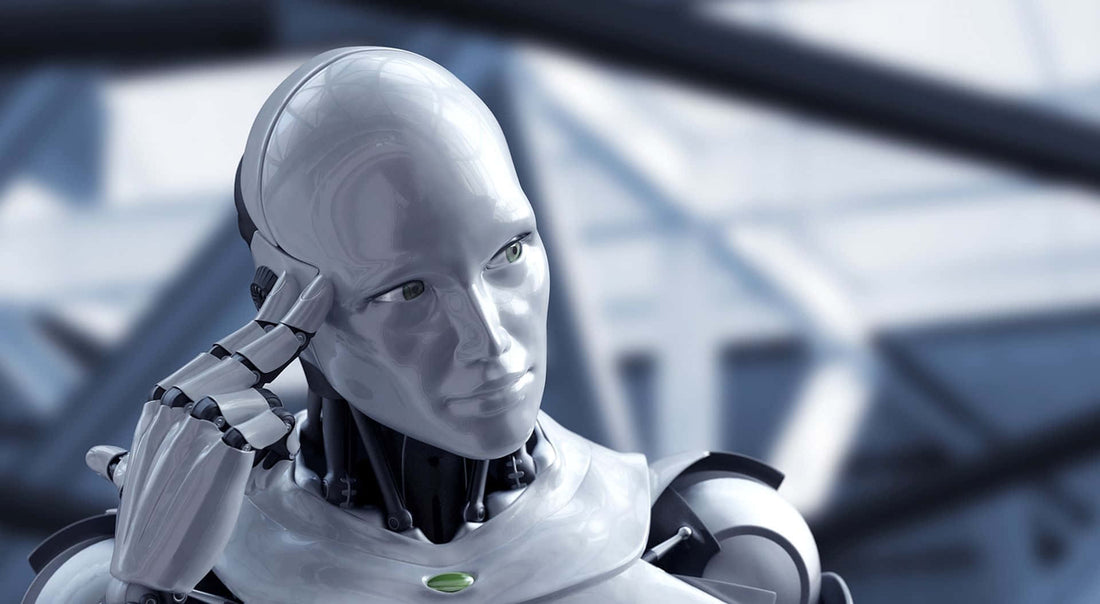
How Modern Robot Software Paves the Way for Intelligent Machines
Share

Introduction
The robotics industry stands at the forefront of technological evolution, transitioning from rudimentary mechanical systems to advanced, intelligent machines. This transformation is driven by modern robot software, empowering machines to execute intricate tasks, adapt to environments, and collaborate with humans. As robotics evolves, so do the possibilities for industries and investors alike.
This blog explores cutting-edge trends in robot software that are shaping the future, from AI-driven learning algorithms to bio-inspired swarm robotics. These advancements hold transformative potential, making robotics a promising frontier for growth and investment.
Artificial Intelligence Integration: A Game-Changer
Artificial Intelligence (AI) has revolutionized robotics by enabling machines to process data, learn from experience, and adapt to dynamic environments. AI-powered robots excel in tasks once reserved for humans, such as machine vision, natural language processing, and predictive analytics.
· Why It Matters for Investors:
AI integration enhances automation, addressing labor shortages and driving productivity. Industries like manufacturing, healthcare, and logistics are increasingly relying on AI-driven robots, creating lucrative opportunities for investors in robotics and AI startups.
· Case Study:
In 2022, Brain Corp launched BrainOS, an AI software platform designed to accelerate the development of autonomous commercial robots. This innovation highlights the rapid adoption of AI in robotics, setting a benchmark for future advancements.
Edge Computing: Real-Time Responsiveness
Edge computing reduces latency by processing data locally, enabling robots to make real-time decisions. This is crucial in applications like autonomous vehicles, industrial automation, and remote operations.
· Why It Matters for Investors:
The demand for responsive robots in industries with critical decision-making needs is on the rise. Companies leveraging edge computing technologies are positioned for significant growth as the need for real-time robotics solutions expands.
· Case Study:
Siemens' Industrial Edge platform, launched in late 2022, integrates operational and information technologies to process large amounts of data in real time. This advancement underscores the importance of edge computing in robotics.
Modular and Open-Source Operating Systems: Driving Innovation
Open-source frameworks like the Robot Operating System (ROS) enable developers to collaborate, share code, and accelerate innovation. These modular systems allow for the customization of robots to suit specific tasks and environments.
· Why It Matters for Investors:
The open-source model fosters rapid innovation and cost-effective development, attracting startups and research institutions. Companies leveraging modular systems can scale operations efficiently, offering attractive opportunities for venture capitalists.
Human-Robot Collaboration: The Future of Work
Modern robot software enables seamless interaction between humans and robots through natural language processing and gesture recognition. This collaboration is particularly beneficial in industries like healthcare, where robots assist in surgeries, and manufacturing, where they enhance efficiency.
· Why It Matters for Investors:
Collaborative robots (cobots) are a fast-growing segment in the robotics industry. The focus on safety, efficiency, and intuitive interfaces positions cobot manufacturers for rapid adoption and revenue growth.
· Case Study:
Gesture recognition and voice command technologies are simplifying robot operations, reducing the need for extensive training, and opening doors to broader adoption across industries.
Swarm Robotics: Collective Intelligence
Swarm robotics leverages the collective behavior of simple robots to perform complex tasks. Inspired by nature, this approach enables scalable and efficient solutions in areas such as disaster recovery, agriculture, and military operations.
· Why It Matters for Investors:
Swarm robotics represents a high-potential field with applications in diverse sectors. Companies developing swarm solutions are likely to become key players in industries requiring scalable and adaptive robotic systems.
· Case Study:
Bio-inspired algorithms driving swarm robotics are not only enhancing efficiency but also fostering interdisciplinary innovation, creating a rich ecosystem for investment.
Cloud Connectivity: Data-Driven Insights
Cloud-based robotics allows centralized data sharing, analysis, and real-time software updates. This connectivity enhances robot performance, enables predictive maintenance, and ensures agility in software deployment.
· Why It Matters for Investors:
Companies offering cloud-connected robotics solutions provide essential infrastructure for data-driven decision-making. The ability to gather insights at scale makes these firms attractive to enterprises seeking operational efficiency.
Enhanced Cybersecurity: Building Trust in Robotics
As robots integrate into critical systems, robust cybersecurity measures are essential to protect data and operations. Encryption, secure communication protocols, and intrusion detection systems are becoming standard in robot software.
· Why It Matters for Investors:
The focus on cybersecurity opens opportunities for investment in firms specializing in secure robotics, addressing growing concerns over data integrity and operational safety.
Conclusion
The evolution of robot software is not just a technological milestone—it’s a gateway to unprecedented possibilities. From AI integration and edge computing to swarm robotics and enhanced cybersecurity, the advancements in robot software are transforming industries and redefining human-machine collaboration.
For investors, robotics presents a fertile ground for growth, innovation, and impactful investments. By aligning with companies at the forefront of these trends, you can be part of a revolution that promises to reshape the future of work, automation, and everyday life.